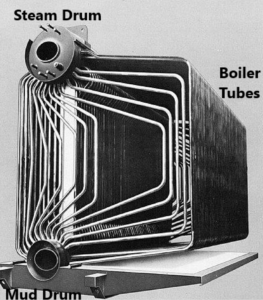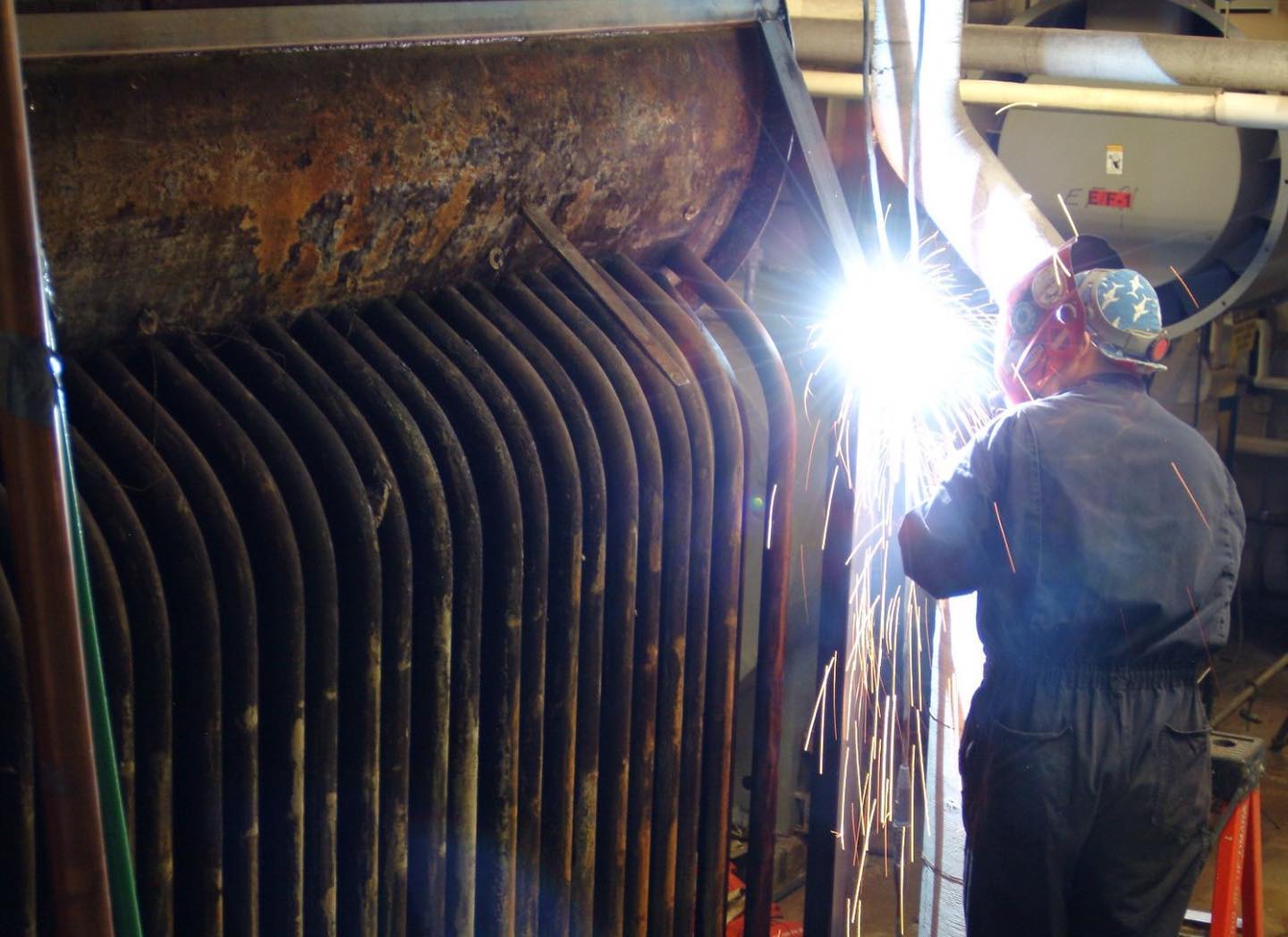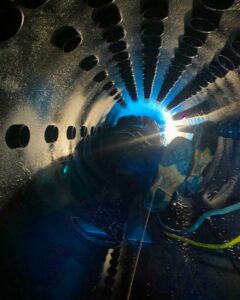

Boiler Tubes And The Steam Drum
The boiler tubes are an essential part of the overall boiler system. The tubes themselves are attached to the drum through a process called “rolling”. This is when you use a special tool to forcibly press the boiler tube outward against the drum. These connections are the covered in refractory to help protect them from the heat in the system. This allows the tubes to sit full of water and handle the pressures of the boiler system without leaking.


Welding steam drum supports
As the burner provides heat to the boiler, it passes over these tubes, which heats the water inside. This hot water rises to the steam drum where the steam can be separated from the water.
The drum itself is full of baffles or steam separators. These help to prevent water droplets in the steam from accidentally entering the steam header. In other words, the baffles help to prevent a phenomenon known as water hammer and allow for clean dry steam to exit the system.
Mud Drum


One of our technicians performing a welding repair inside a mud drum.
A steam drum is commonly used in conjunction with what is known as a “mud drum” or a “water drum”. The mud drum is located at the bottom of a water tube boiler and is connected to the steam drum via boiler tubes. The mud drum sits full of water and provides a space where impurities in the water can settle down into. This collection of sediment is the removed from the boiler in a process called “blow down”. Blow down expels the water and sediment in the bottom of the mud drum from the system.
Super Heated Steam
In some situation the steam needs to be super heated in order to power a turbine or for some other purpose. This involves heating the saturated steam produced and is described well by Bright Hub Engineering.
“The saturated steam is fed through a superheater, which is a nest of coils suspended from the underside of the steam drum. These coils are in the path of the exhaust gases. These hot gases raise the saturated steam to a high temperature. This produces dry superheated steam that is supplied to the main and auxiliary steam turbines.”
Safety Devices
Relief valves can be found on top of all steam drums. This is to ensure that the drum does not become over pressured. If the pressure ever rises above the design parameters, the relief valve will open allowing the pressure to be relieved in the drum. Water level indicators and low water cut-offs are also found on these systems. This ensures the boiler does not experience a low water condition. Contact us today for all of your industrial boiler needs!


